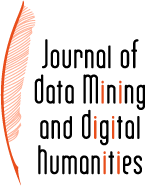 |
Raphaël Barman ; Maud Ehrmann ; Simon Clematide ; Sofia Ares Oliveira ; Frédéric Kaplan - Combining Visual and Textual Features for Semantic Segmentation of Historical Newspapers
jdmdh:6107 - Journal of Data Mining & Digital Humanities, 19 janvier 2021, HistoInformatique - https://doi.org/10.46298/jdmdh.6107 The massive amounts of digitized historical documents acquired over the last decades naturally lend themselves to automatic processing and exploration.
Research work seeking to automatically process facsimiles and extract information thereby are multiplying with, as a first essential step, document layout analysis. If the identification and categorization of segments of interest in document images have seen significant progress over the last years thanks to deep learning techniques, many challenges remain with, among others, the use of finer-grained segmentation typologies and the consideration of complex, heterogeneous documents such as historical newspapers. Besides, most approaches consider visual features only, ignoring textual signal. In this context, we introduce a multimodal approach for the semantic segmentation of historical newspapers that combines visual and textual features. Based on a series of experiments on diachronic Swiss and Luxembourgish newspapers, we investigate, among others, the predictive power of visual and textual features and their capacity to generalize across time and sources. Results show consistent improvement of multimodal models in comparison to a strong visual baseline, as well as better robustness to high material variance.
- Source : OpenAIRE Graph
- Media Monitoring of the Past; Financeur: Swiss National Science Foundation; Code: 173719
Datasets
- 1 ScholeXplorer
